Why Chinese snuff bottles are not to be sniffed at

Roula Khalaf, Editor of the FT, selects her favourite stories in this weekly newsletter.
As a new graduate of art history in the late 1980s, Susan Page was flicking through the newspaper when a job advertisement piqued her interest. “It said, ‘Assistant required for Chinese snuff bottle dealer’,” she recalls. “I thought, what on earth is that?” It turned out to be Page’s calling, and she’s been buying and selling these diminutive, decorative vessels ever since – first alongside leading specialist Robert Hall, and now under her own name. “I’ve been all over the world visiting collectors with my bag full of snuff bottles,” she says. “People just love them.”
The Chinese began making snuff bottles (while the Europeans went in for boxes) around the mid-17th century, when the habit of inhaling ground-up tobacco was first introduced to the country by the Portuguese. “The Kangxi Emperor was given the gift of snuff by two Jesuit priests, and he just thought it was great,” says Page. “So much so that he asked his craftsmen to make bottles to hold it.” The earliest recorded vessels – no more than 6cm high – were made in glass, and the earliest surviving examples date to around 1700.
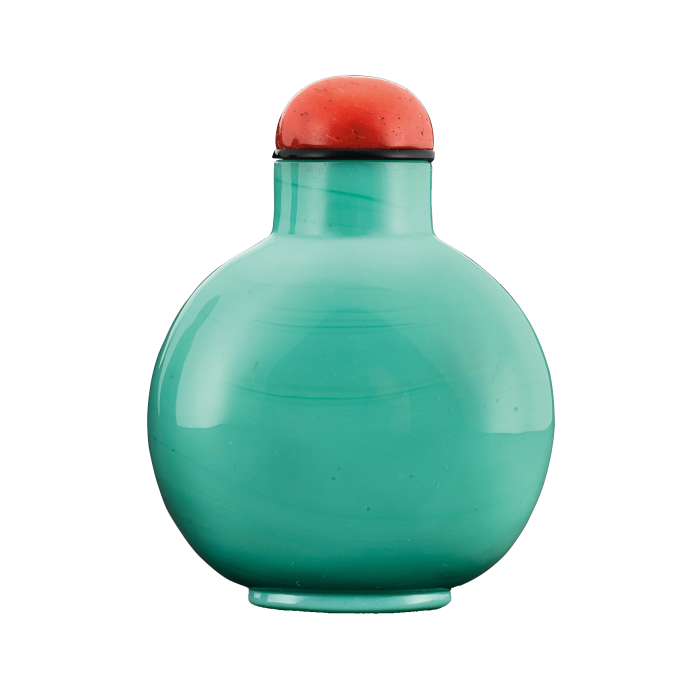
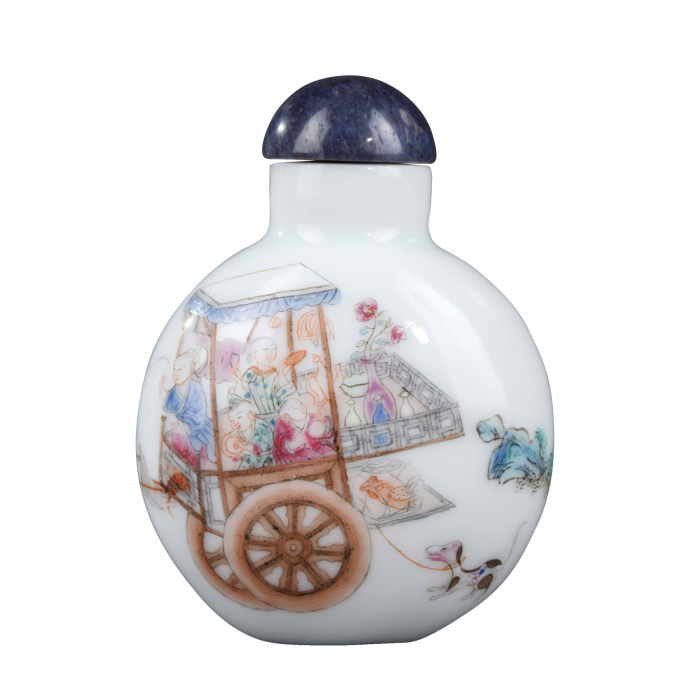
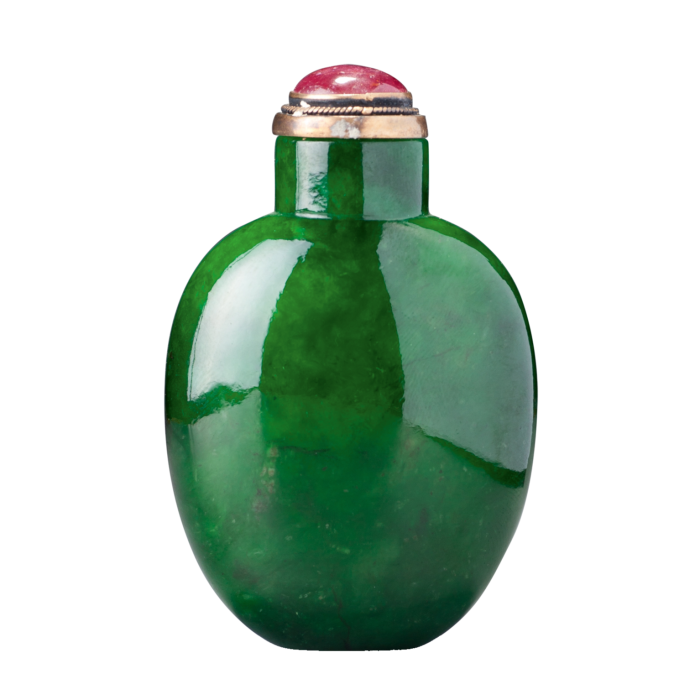

“It’s generally considered that the 18th-century imperial bottles are the finest,” says Page, adding that palace-made stone versions – in jade, but also lapis lazuli, agate and carnelian – began to appear around 1750. “The snuff habit then spread from the court to the general population and really took off in the 19th century.”
Page’s current selection is priced between £800 and £20,000, and ranges from glass to porcelain to “one made from a tangerine grown into a mould”, she says, highlighting a curious sub-genre of plant-based snuff bottles. “My most expensive was a rare cylindrical spinach-green jade, but my favourite is an 18th-century glass bottle with a red-glass overlay [£14,000]. It shows a stylised phoenix on one side and a dragon on the other; it’s just so beautiful and lyrical.”
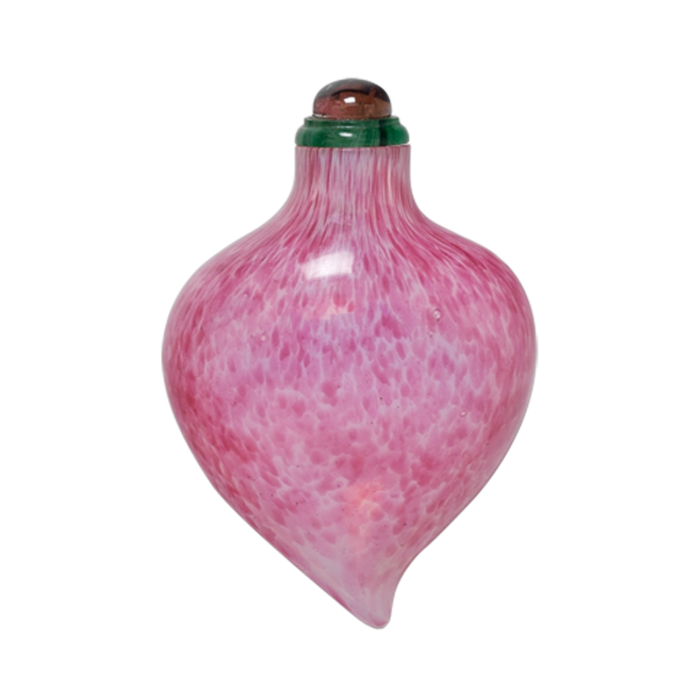
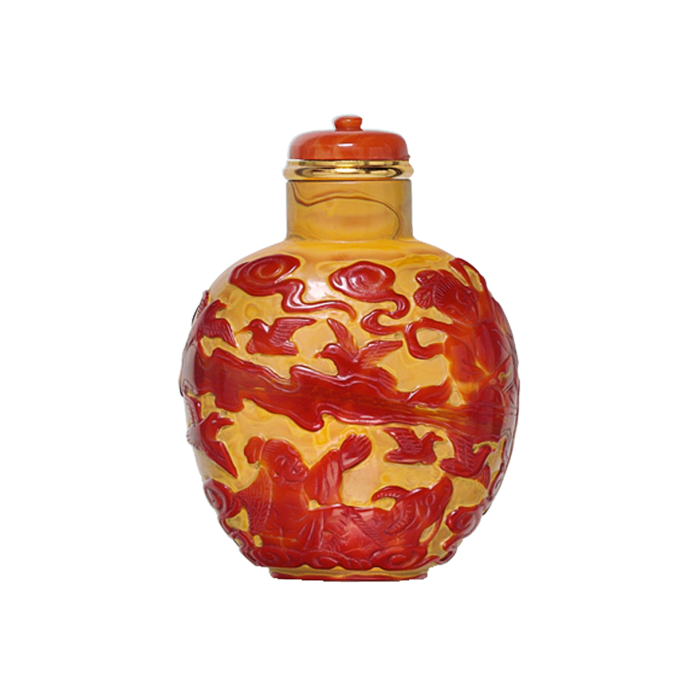
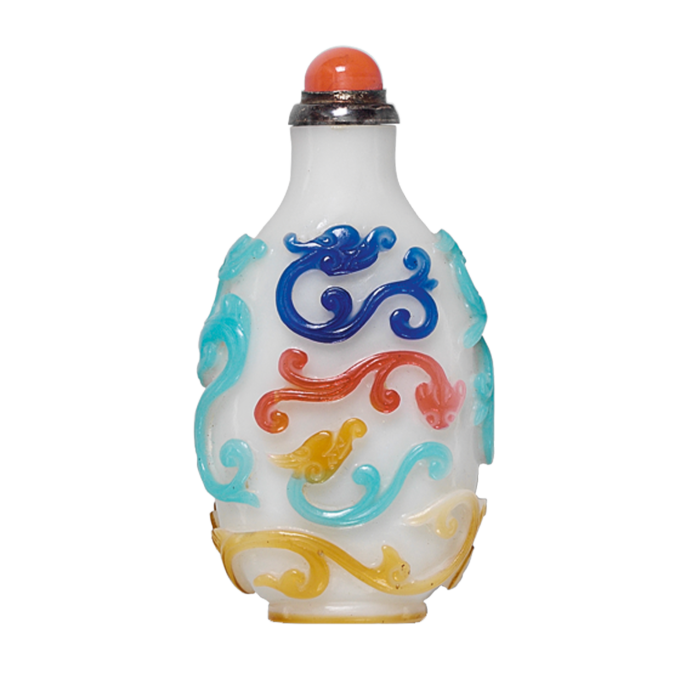
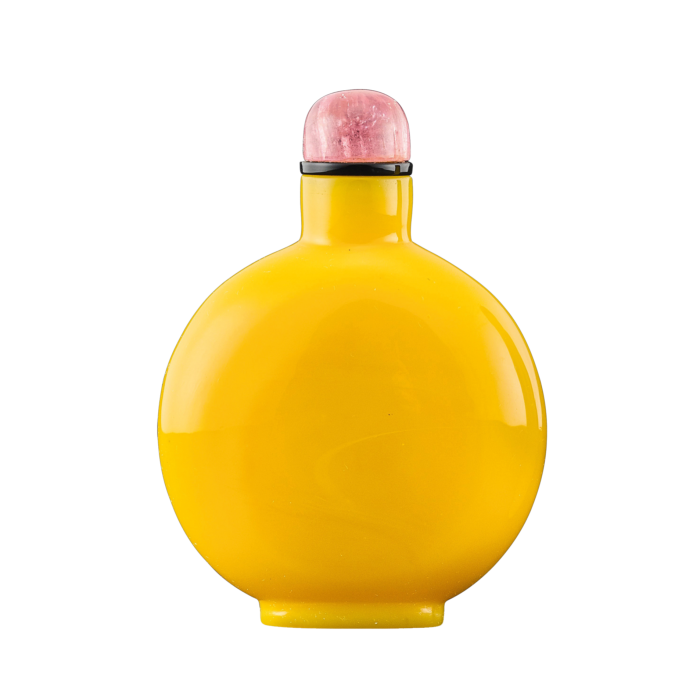
Another intricate style, developed in the early 19th century, involved painstakingly painting the inside of glass or crystal bottles with scenes of people, wildlife or landscapes. “They used bent bamboo or a very, very fine brush; they’re really quite extraordinary,” says Michael Hughes, Bonhams’ head of Chinese ceramics and works of art for the US. “The market for them has grown enormously. Anything with writing on it is particularly highly prized.” Last September, at Bonhams’ sales of the Manfred Arnold and Emily Byrne Curtis collections of Chinese snuff bottles, late-19th-century and early-20th-century examples sold for between $765 and just over $20,000.
WHERE TO BUY
Bertrand de Lavergne bertranddelavergne.com
Brafa 19-26 June, brafa.art
Bonhams bonhams.com
Christie’s christies.com
Robert Hall snuffbottle.com
Sotheby’s sothebys.com
Susan Page
snuffbottlepages.com
WHERE TO SEE
Burghley House Lincolnshire, burghley.co.uk
Asian Art Museum San Francisco, asianart.org
National Palace Museum Taipei City, theme.npm.edu.tw
WHAT TO READ
Collecting Chinese Snuff Bottles by Susan Page
WHAT TO JOIN
The International Chinese Snuff Bottle Society, snuffbottlesociety.org
For certain imperial items, however, prices can be “stratospheric”, says Hughes, especially for early enamelled examples, including one from the Qianlong palace workshops that fetched $3,328,400 at Bonhams in 2011. At Sotheby’s Hong Kong, Julian King notes that the snuff bottle market was “very slow from around mid-2015, until the inaugural online sale [from one private German collector] we held in February 2021”. The top price went to an enamelled metal bottle showing a pretty pink-toned landscape from the Jiaqing period (1796-1820), which sold for HK$3,024,000 (about £288,270) – “the highest price for any snuff bottle in recent years”, says King.
Another rare enamelled bottle bearing the mark of the Qianlong Emperor (1736-1795) will be auctioned at Christie’s in New York on 24 March. “It is a beautiful bottle depicting birds on flowering branches and butterflies,” says Andrew Lueck of the lot, which has a $400,000-$600,000 estimate.

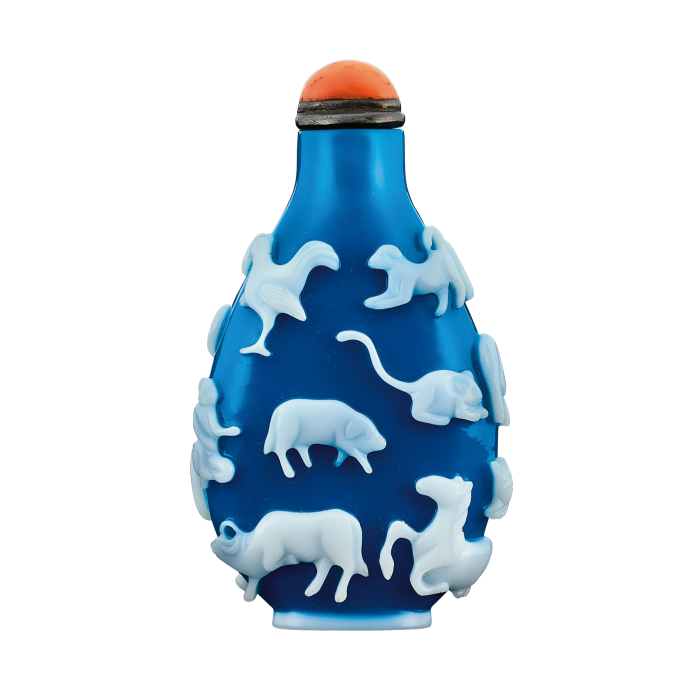
At the more affordable end of the market, Paris-based dealer Bertrand de Lavergne (who will be at Brussels’ Brafa fair in June) stocks pieces starting at €1,000. Porcelain bottles are well represented, with blue-and-white designs alongside “about 10 polychrome bottles from the Daoguang period ([1821-1850] made in the imperial kilns of Jingdezhen” for up to €10,000.
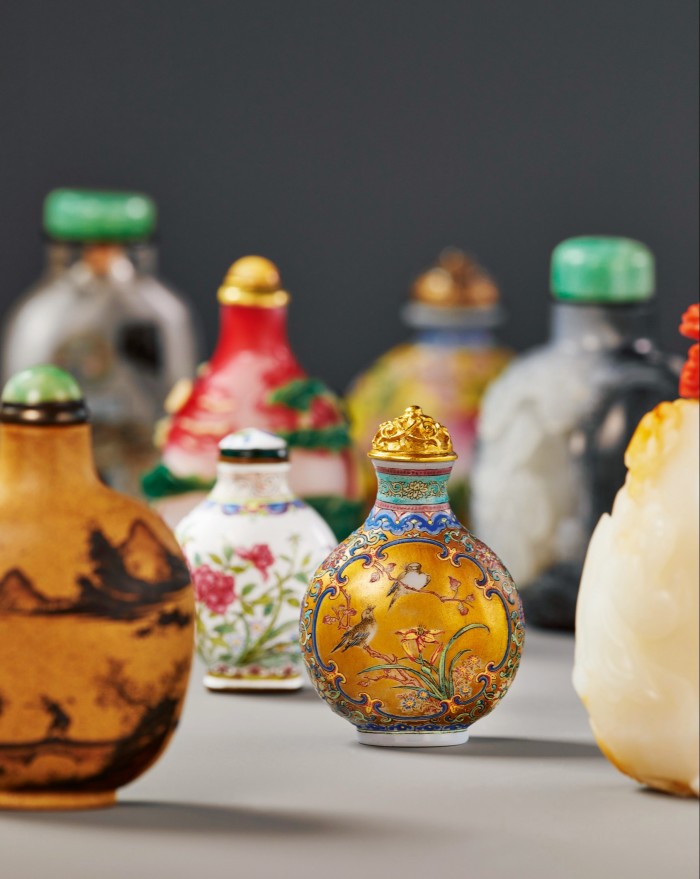
“I am one of the more impecunious collectors,” says Jeremy Levine, one of Susan Page’s London-based clients, who favours hollowed-out jade pebbles. “They are very tactile, a bit like a worry stone. Holding a large chunk of jade just feels nice.” For aficionado Hikari Yokoyama, founder of interior design and art curation firm Naum House, aesthetics come first: “I love finding them in flea markets and antique shops,” she says.
And in LA, collector Richard Liu first came across an inside-painted bottle in Chinatown over 30 years ago. “Now I have around 450 bottles, mostly in glass and porcelain,” he says. “There’s a seemingly infinite variety in terms of shape and colour.” While collecting snuff bottles is a way to learn about his Chinese heritage, it’s also a very sociable pastime for Liu, a member of the International Chinese Snuff Bottle Society who takes part in its yearly conventions. “It’s a small community, all very dedicated, but also very friendly and sharing. There’s very little competitiveness; it’s just fun.” And that’s certainly not something to be sniffed at.
Comments